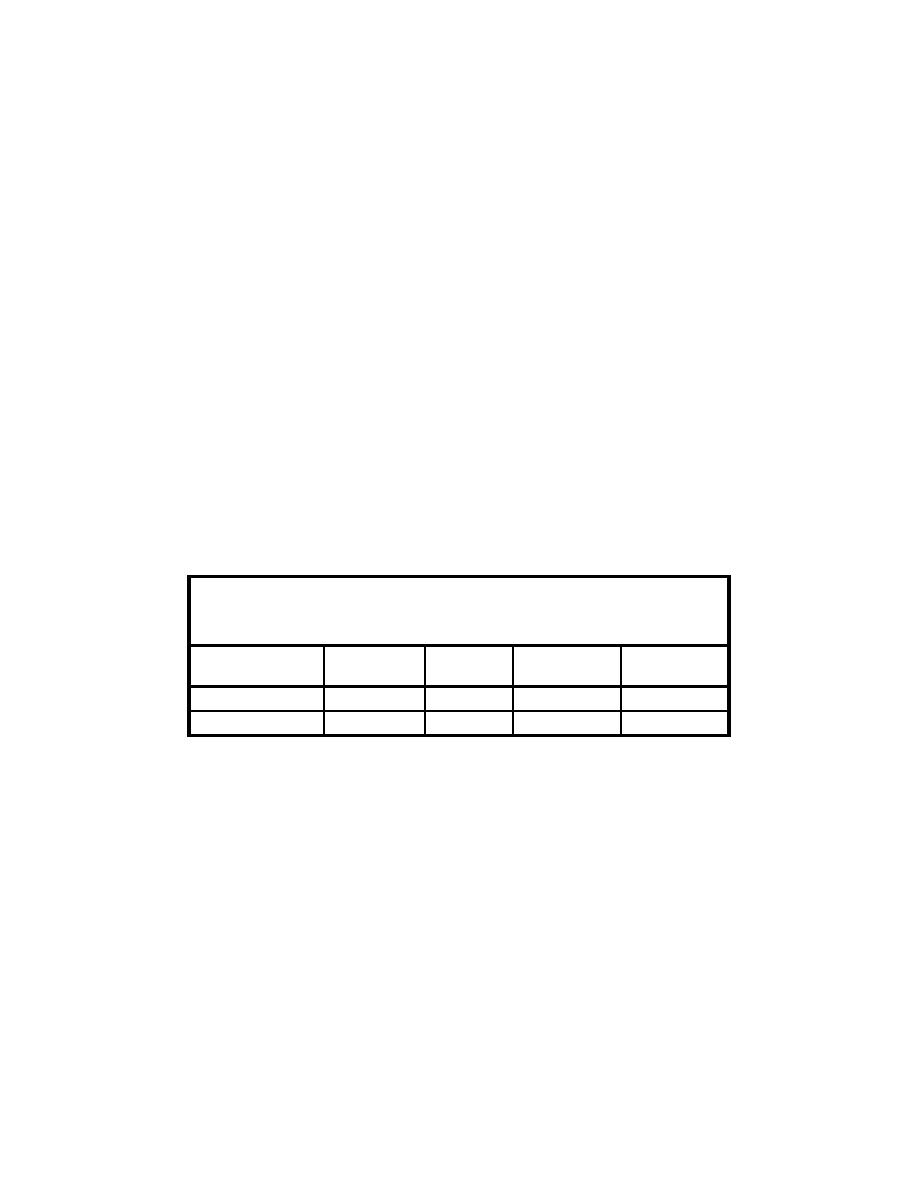
where
V = velocity
R, = the hydraulic radius (typically taken as the average depth for
inlets, since thay are shallow and wide channels)
S = water level slope across the inlet from ocean to bay
Table 4 shows an example based on realistic laboratory and field data. The
table indicates that smaller inlets have smaller velocity values for equilibrium
conditions. As seen in Table 2, equilibrium velocity values were in the range of
0.249 to 0.396 m/sec (0.82 to 1.30 ft/sec). Interesting to note from Table 4 is that
the ratio of the velocities between large field inlet and small laboratory inlet was
about the same as the velocity scale shown in Table 1. The Manning's n values in
Table 4 for the field inlet represent a typical value used in many field calculations,
and for the laboratory, were calculated from data collected in this study (values for
equilibrium conditions varied from 0.012 to 0.025). The model movable bed was
covered with ripples. For example at depths of about 0.11 m (0.35 ft), ripple
lengths of about 0.076 to 0.122 m (0.25 to 0.40 ft) and heights of 0.012 to
0.018 m (0.04 to 0.06 ft) occurred. These would scale roughly to be about one-
half the wavelength of sand waves in a large inlet. Ripple heights in the labora-
tory experiments would scale approximately to dune heights in a field inlet.
Table 4
Calculation of Velocity in Laboratory and Field Inlet with Manning's
Equation
V, m/sec
Inlet
n
R, m (ft)
S
(ft/sec)
Large field inlet
0.025
3.048 (10.0)
0.0005
1.856 (6.09)
Laboratory inlet
0.017
0.09 (0.3)
0.0005
0.262 (0.86)
26
Chapter 4 Experiments and Results



 Previous Page
Previous Page
